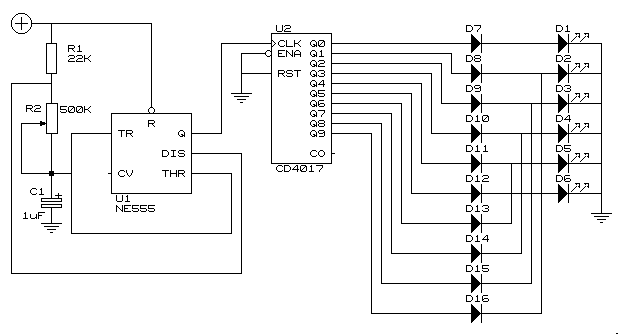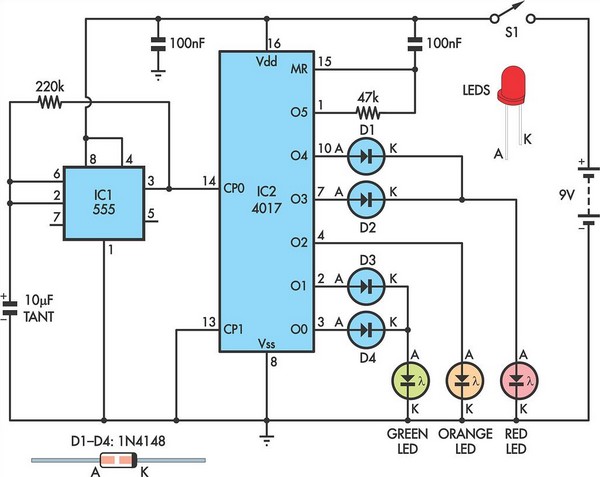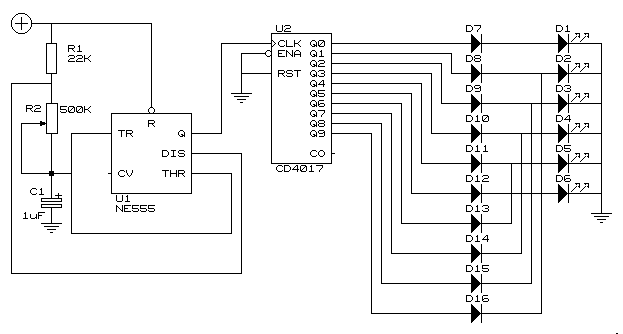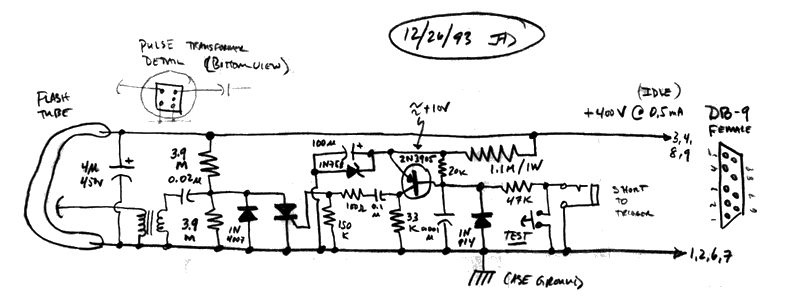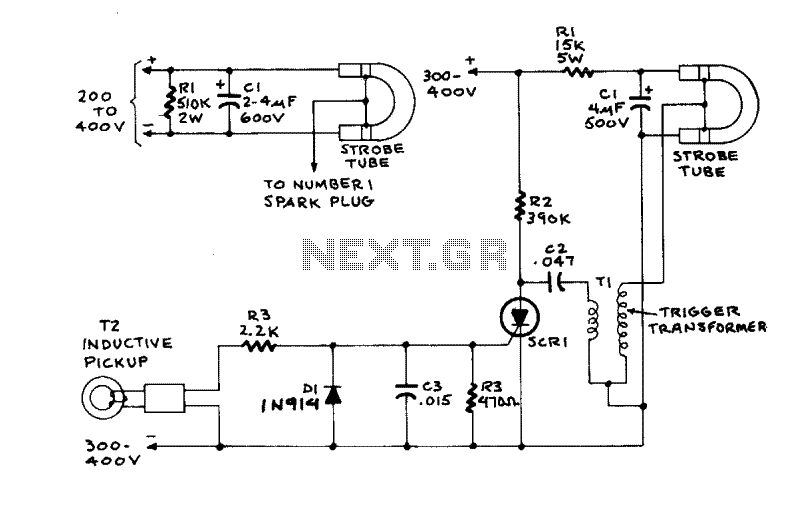
Model Aeroplane Navigation Strobe
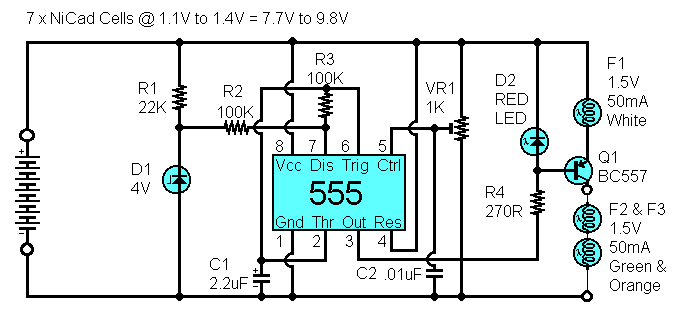
If you are interested in model aeroplanes and have the capital, a radio controlled electric park flyer is a must have. An RC aeroplane under 400 grams floats around like the rubber models of my youth and contact with the ground doesn't seem to involve that sickening crunch that comes with larger models. Finding a deserted park in which to fly one (that propeller can still be dangerous) and waiting for a windless day isn't always that easy but it sure beats driving an hour to a club field. Park flyers are definitely stress beaters and are also just plain fun. More: This circuit should work with 6, 7 or 8 cells as zener D1 and trim pot VR1 make the duty cycle of the 555 timer chip adaptable and the transistor Q1 limits the lamp current to 50mA. R1 and D1 provide a near stable voltage so that C1 (I used tantalum 35w
The circuit described operates using a 555 timer integrated circuit, which is a versatile component commonly used in timing applications and pulse generation. The configuration allows for variable duty cycles, facilitated by the combination of the zener diode (D1) and the trim potentiometer (VR1). These components work together to stabilize the voltage supply to the timer, ensuring consistent operation regardless of the number of cells in the power supply, which can range from 6 to 8 cells.
The transistor (Q1) is employed as a current limiting device, ensuring that the output current to the connected load (in this case, a lamp) does not exceed 50 mA. This is crucial for preventing damage to both the lamp and the circuit components. The resistor (R1) serves to further stabilize the voltage across the zener diode, contributing to the overall reliability of the power supply.
Capacitor C1, specified as a tantalum capacitor, is likely used to filter and smooth the power supply, providing a stable voltage to the timer circuit. This is particularly important in applications where sudden changes in load current could otherwise disrupt the operation of the timer.
In summary, the circuit is designed to control a lamp using a 555 timer, with adjustable duty cycles and stable voltage regulation, making it suitable for various applications, including those in model aeroplanes, where weight and power efficiency are critical.If you are interested in model aeroplanes and have the capital, a radio controlled electric park flyer is a must have. An RC aeroplane under 400 grams floats around like the rubber models of my youth and contact with the ground doesn`t seems to involve that sickening crunch that comes with larger models.
Finding a deserted park in which to fly one (that propellor can still be dangerous) and waiting for a windless day isn`t always that easy but it sure beats driving an hour to a club field. Park flyers are definitely stress beaters and are also just plain fun This circuit should work with 6, 7 or 8 cells as zener D1 and trim pot VR1 make the duty cycle of the 555 timer chip adaptable and the transistor Q1 limits the lamp current to 50mA. R1 and D1 provide a near stable voltage so that C1 (I used tantalum 35w 🔗 External reference
The circuit described operates using a 555 timer integrated circuit, which is a versatile component commonly used in timing applications and pulse generation. The configuration allows for variable duty cycles, facilitated by the combination of the zener diode (D1) and the trim potentiometer (VR1). These components work together to stabilize the voltage supply to the timer, ensuring consistent operation regardless of the number of cells in the power supply, which can range from 6 to 8 cells.
The transistor (Q1) is employed as a current limiting device, ensuring that the output current to the connected load (in this case, a lamp) does not exceed 50 mA. This is crucial for preventing damage to both the lamp and the circuit components. The resistor (R1) serves to further stabilize the voltage across the zener diode, contributing to the overall reliability of the power supply.
Capacitor C1, specified as a tantalum capacitor, is likely used to filter and smooth the power supply, providing a stable voltage to the timer circuit. This is particularly important in applications where sudden changes in load current could otherwise disrupt the operation of the timer.
In summary, the circuit is designed to control a lamp using a 555 timer, with adjustable duty cycles and stable voltage regulation, making it suitable for various applications, including those in model aeroplanes, where weight and power efficiency are critical.If you are interested in model aeroplanes and have the capital, a radio controlled electric park flyer is a must have. An RC aeroplane under 400 grams floats around like the rubber models of my youth and contact with the ground doesn`t seems to involve that sickening crunch that comes with larger models.
Finding a deserted park in which to fly one (that propellor can still be dangerous) and waiting for a windless day isn`t always that easy but it sure beats driving an hour to a club field. Park flyers are definitely stress beaters and are also just plain fun This circuit should work with 6, 7 or 8 cells as zener D1 and trim pot VR1 make the duty cycle of the 555 timer chip adaptable and the transistor Q1 limits the lamp current to 50mA. R1 and D1 provide a near stable voltage so that C1 (I used tantalum 35w 🔗 External reference
